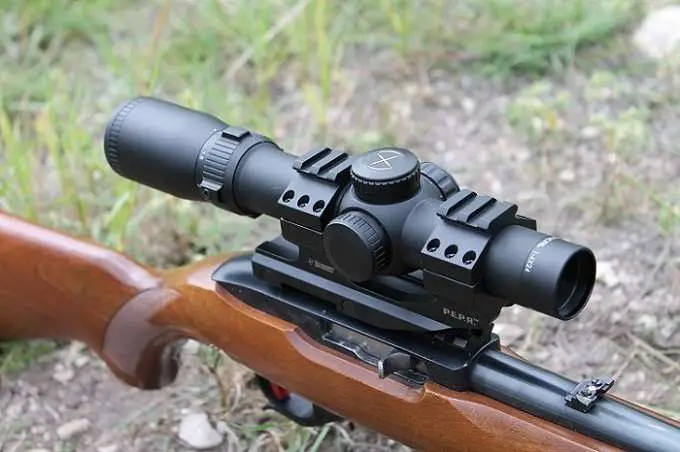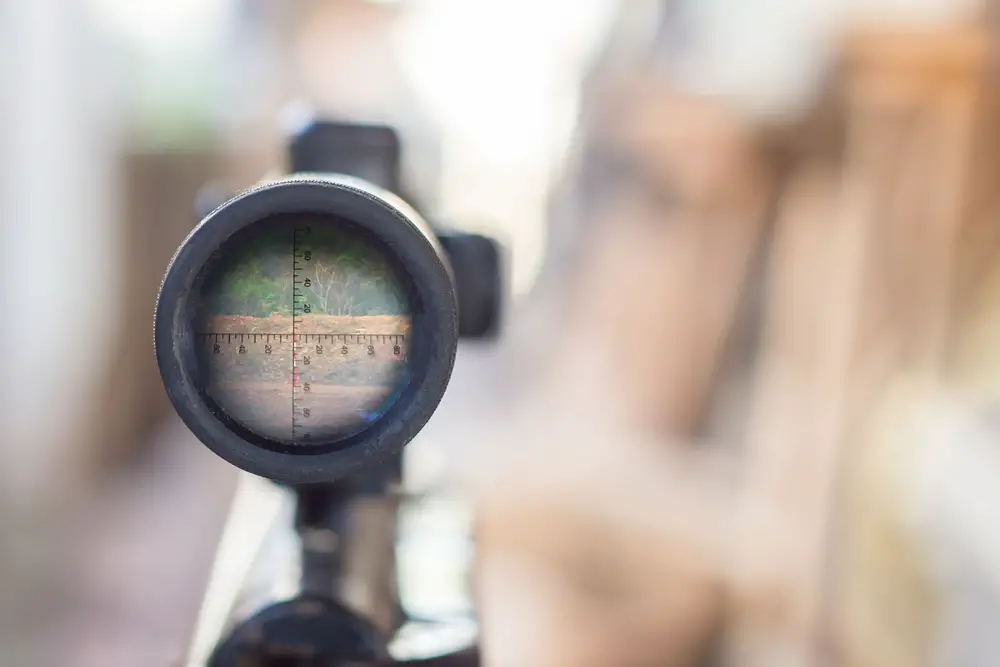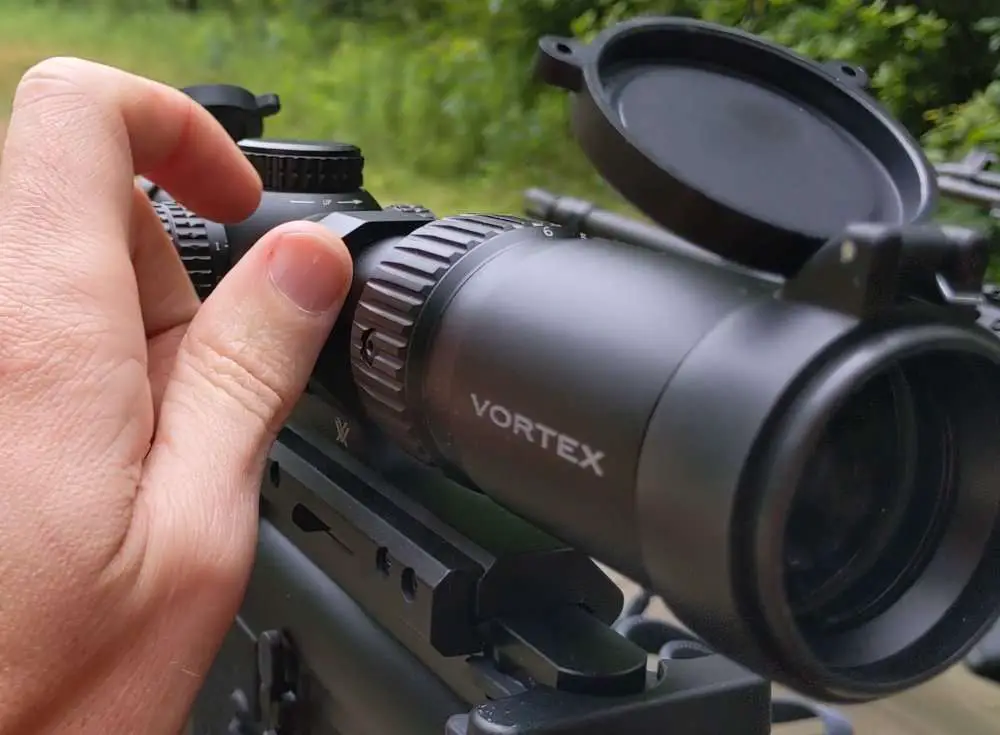var _ckyConfig = {"_ipData":[],"_assetsURL":"https:\/\/reloadyourgear.com\/wp-content\/plugins\/cookie-law-info\/lite\/frontend\/images\/","_publicURL":"https:\/\/reloadyourgear.com","_expiry":"365","_categories":[{"name":"Necessary","slug":"necessary","isNecessary":true,"ccpaDoNotSell":true,"cookies":[],"active":true,"defaultConsent":{"gdpr":true,"ccpa":true}},{"name":"Functional","slug":"functional","isNecessary":false,"ccpaDoNotSell":true,"cookies":[],"active":true,"defaultConsent":{"gdpr":false,"ccpa":false}},{"name":"Analytics","slug":"analytics","isNecessary":false,"ccpaDoNotSell":true,"cookies":[],"active":true,"defaultConsent":{"gdpr":false,"ccpa":false}},{"name":"Performance","slug":"performance","isNecessary":false,"ccpaDoNotSell":true,"cookies":[],"active":true,"defaultConsent":{"gdpr":false,"ccpa":false}},{"name":"Advertisement","slug":"advertisement","isNecessary":false,"ccpaDoNotSell":true,"cookies":[],"active":true,"defaultConsent":{"gdpr":false,"ccpa":false}}],"_activeLaw":"gdpr","_rootDomain":"","_block":"1","_showBanner":"1","_bannerConfig":{"settings":{"type":"box","preferenceCenterType":"popup","position":"bottom-left","applicableLaw":"gdpr"},"behaviours":{"reloadBannerOnAccept":false,"loadAnalyticsByDefault":false,"animations":{"onLoad":"animate","onHide":"sticky"}},"config":{"revisitConsent":{"status":true,"tag":"revisit-consent","position":"bottom-left","meta":{"url":"#"},"styles":{"background-color":"#0056A7"},"elements":{"title":{"type":"text","tag":"revisit-consent-title","status":true,"styles":{"color":"#0056a7"}}}},"preferenceCenter":{"toggle":{"status":true,"tag":"detail-category-toggle","type":"toggle","states":{"active":{"styles":{"background-color":"#1863DC"}},"inactive":{"styles":{"background-color":"#D0D5D2"}}}}},"categoryPreview":{"status":false,"toggle":{"status":true,"tag":"detail-category-preview-toggle","type":"toggle","states":{"active":{"styles":{"background-color":"#1863DC"}},"inactive":{"styles":{"background-color":"#D0D5D2"}}}}},"videoPlaceholder":{"status":true,"styles":{"background-color":"#000000","border-color":"#000000","color":"#ffffff"}},"readMore":{"status":false,"tag":"readmore-button","type":"link","meta":{"noFollow":true,"newTab":true},"styles":{"color":"#1863DC","background-color":"transparent","border-color":"transparent"}},"auditTable":{"status":true},"optOption":{"status":true,"toggle":{"status":true,"tag":"optout-option-toggle","type":"toggle","states":{"active":{"styles":{"background-color":"#1863dc"}},"inactive":{"styles":{"background-color":"#FFFFFF"}}}}}}},"_version":"3.2.0","_logConsent":"1","_tags":[{"tag":"accept-button","styles":{"color":"#FFFFFF","background-color":"#1863DC","border-color":"#1863DC"}},{"tag":"reject-button","styles":{"color":"#1863DC","background-color":"transparent","border-color":"#1863DC"}},{"tag":"settings-button","styles":{"color":"#1863DC","background-color":"transparent","border-color":"#1863DC"}},{"tag":"readmore-button","styles":{"color":"#1863DC","background-color":"transparent","border-color":"transparent"}},{"tag":"donotsell-button","styles":{"color":"#1863DC","background-color":"transparent","border-color":"transparent"}},{"tag":"accept-button","styles":{"color":"#FFFFFF","background-color":"#1863DC","border-color":"#1863DC"}},{"tag":"revisit-consent","styles":{"background-color":"#0056A7"}}],"_shortCodes":[{"key":"cky_readmore","content":"<a href=\"#\" class=\"cky-policy\" aria-label=\"Cookie Policy\" target=\"_blank\" rel=\"noopener\" data-cky-tag=\"readmore-button\">Cookie Policy<\/a>","tag":"readmore-button","status":false,"attributes":{"rel":"nofollow","target":"_blank"}},{"key":"cky_show_desc","content":"<button class=\"cky-show-desc-btn\" data-cky-tag=\"show-desc-button\" aria-label=\"Show more\">Show more<\/button>","tag":"show-desc-button","status":true,"attributes":[]},{"key":"cky_hide_desc","content":"<button class=\"cky-show-desc-btn\" data-cky-tag=\"hide-desc-button\" aria-label=\"Show less\">Show less<\/button>","tag":"hide-desc-button","status":true,"attributes":[]},{"key":"cky_category_toggle_label","content":"[cky_{{status}}_category_label] [cky_preference_{{category_slug}}_title]","tag":"","status":true,"attributes":[]},{"key":"cky_enable_category_label","content":"Enable","tag":"","status":true,"attributes":[]},{"key":"cky_disable_category_label","content":"Disable","tag":"","status":true,"attributes":[]},{"key":"cky_video_placeholder","content":"<div class=\"video-placeholder-normal\" data-cky-tag=\"video-placeholder\" id=\"[UNIQUEID]\"><p class=\"video-placeholder-text-normal\" data-cky-tag=\"placeholder-title\">Please accept cookies to access this content<\/p><\/div>","tag":"","status":true,"attributes":[]},{"key":"cky_enable_optout_label","content":"Enable","tag":"","status":true,"attributes":[]},{"key":"cky_disable_optout_label","content":"Disable","tag":"","status":true,"attributes":[]},{"key":"cky_optout_toggle_label","content":"[cky_{{status}}_optout_label] [cky_optout_option_title]","tag":"","status":true,"attributes":[]},{"key":"cky_optout_option_title","content":"Do Not Sell or Share My Personal Information","tag":"","status":true,"attributes":[]},{"key":"cky_optout_close_label","content":"Close","tag":"","status":true,"attributes":[]}],"_rtl":"","_providersToBlock":[]};
var _ckyStyles = {"css":".cky-overlay{background: #000000; opacity: 0.4; position: fixed; top: 0; left: 0; width: 100%; height: 100%; z-index: 99999999;}.cky-hide{display: none;}.cky-btn-revisit-wrapper{display: flex; align-items: center; justify-content: center; background: #0056a7; width: 45px; height: 45px; border-radius: 50%; position: fixed; z-index: 999999; cursor: pointer;}.cky-revisit-bottom-left{bottom: 15px; left: 15px;}.cky-revisit-bottom-right{bottom: 15px; right: 15px;}.cky-btn-revisit-wrapper .cky-btn-revisit{display: flex; align-items: center; justify-content: center; background: none; border: none; cursor: pointer; position: relative; margin: 0; padding: 0;}.cky-btn-revisit-wrapper .cky-btn-revisit img{max-width: fit-content; margin: 0; height: 30px; width: 30px;}.cky-revisit-bottom-left:hover::before{content: attr(data-tooltip); position: absolute; background: #4e4b66; color: #ffffff; left: calc(100% + 7px); font-size: 12px; line-height: 16px; width: max-content; padding: 4px 8px; border-radius: 4px;}.cky-revisit-bottom-left:hover::after{position: absolute; content: \"\"; border: 5px solid transparent; left: calc(100% + 2px); border-left-width: 0; border-right-color: #4e4b66;}.cky-revisit-bottom-right:hover::before{content: attr(data-tooltip); position: absolute; background: #4e4b66; color: #ffffff; right: calc(100% + 7px); font-size: 12px; line-height: 16px; width: max-content; padding: 4px 8px; border-radius: 4px;}.cky-revisit-bottom-right:hover::after{position: absolute; content: \"\"; border: 5px solid transparent; right: calc(100% + 2px); border-right-width: 0; border-left-color: #4e4b66;}.cky-revisit-hide{display: none;}.cky-consent-container{position: fixed; width: 440px; box-sizing: border-box; z-index: 9999999; border-radius: 6px;}.cky-consent-container .cky-consent-bar{background: #ffffff; border: 1px solid; padding: 20px 26px; box-shadow: 0 -1px 10px 0 #acabab4d; border-radius: 6px;}.cky-box-bottom-left{bottom: 40px; left: 40px;}.cky-box-bottom-right{bottom: 40px; right: 40px;}.cky-box-top-left{top: 40px; left: 40px;}.cky-box-top-right{top: 40px; right: 40px;}.cky-custom-brand-logo-wrapper .cky-custom-brand-logo{width: 100px; height: auto; margin: 0 0 12px 0;}.cky-notice .cky-title{color: #212121; font-weight: 700; font-size: 18px; line-height: 24px; margin: 0 0 12px 0;}.cky-notice-des *,.cky-preference-content-wrapper *,.cky-accordion-header-des *,.cky-gpc-wrapper .cky-gpc-desc *{font-size: 14px;}.cky-notice-des{color: #212121; font-size: 14px; line-height: 24px; font-weight: 400;}.cky-notice-des img{height: 25px; width: 25px;}.cky-consent-bar .cky-notice-des p,.cky-gpc-wrapper .cky-gpc-desc p,.cky-preference-body-wrapper .cky-preference-content-wrapper p,.cky-accordion-header-wrapper .cky-accordion-header-des p,.cky-cookie-des-table li div:last-child p{color: inherit; margin-top: 0; overflow-wrap: break-word;}.cky-notice-des P:last-child,.cky-preference-content-wrapper p:last-child,.cky-cookie-des-table li div:last-child p:last-child,.cky-gpc-wrapper .cky-gpc-desc p:last-child{margin-bottom: 0;}.cky-notice-des a.cky-policy,.cky-notice-des button.cky-policy{font-size: 14px; color: #1863dc; white-space: nowrap; cursor: pointer; background: transparent; border: 1px solid; text-decoration: underline;}.cky-notice-des button.cky-policy{padding: 0;}.cky-notice-des a.cky-policy:focus-visible,.cky-notice-des button.cky-policy:focus-visible,.cky-preference-content-wrapper .cky-show-desc-btn:focus-visible,.cky-accordion-header .cky-accordion-btn:focus-visible,.cky-preference-header .cky-btn-close:focus-visible,.cky-switch input[type=\"checkbox\"]:focus-visible,.cky-footer-wrapper a:focus-visible,.cky-btn:focus-visible{outline: 2px solid #1863dc; outline-offset: 2px;}.cky-btn:focus:not(:focus-visible),.cky-accordion-header .cky-accordion-btn:focus:not(:focus-visible),.cky-preference-content-wrapper .cky-show-desc-btn:focus:not(:focus-visible),.cky-btn-revisit-wrapper .cky-btn-revisit:focus:not(:focus-visible),.cky-preference-header .cky-btn-close:focus:not(:focus-visible),.cky-consent-bar .cky-banner-btn-close:focus:not(:focus-visible){outline: 0;}button.cky-show-desc-btn:not(:hover):not(:active){color: #1863dc; background: transparent;}button.cky-accordion-btn:not(:hover):not(:active),button.cky-banner-btn-close:not(:hover):not(:active),button.cky-btn-revisit:not(:hover):not(:active),button.cky-btn-close:not(:hover):not(:active){background: transparent;}.cky-consent-bar button:hover,.cky-modal.cky-modal-open button:hover,.cky-consent-bar button:focus,.cky-modal.cky-modal-open button:focus{text-decoration: none;}.cky-notice-btn-wrapper{display: flex; justify-content: flex-start; align-items: center; flex-wrap: wrap; margin-top: 16px;}.cky-notice-btn-wrapper .cky-btn{text-shadow: none; box-shadow: none;}.cky-btn{flex: auto; max-width: 100%; font-size: 14px; font-family: inherit; line-height: 24px; padding: 8px; font-weight: 500; margin: 0 8px 0 0; border-radius: 2px; cursor: pointer; text-align: center; text-transform: none; min-height: 0;}.cky-btn:hover{opacity: 0.8;}.cky-btn-customize{color: #1863dc; background: transparent; border: 2px solid #1863dc;}.cky-btn-reject{color: #1863dc; background: transparent; border: 2px solid #1863dc;}.cky-btn-accept{background: #1863dc; color: #ffffff; border: 2px solid #1863dc;}.cky-btn:last-child{margin-right: 0;}@media (max-width: 576px){.cky-box-bottom-left{bottom: 0; left: 0;}.cky-box-bottom-right{bottom: 0; right: 0;}.cky-box-top-left{top: 0; left: 0;}.cky-box-top-right{top: 0; right: 0;}}@media (max-width: 440px){.cky-box-bottom-left, .cky-box-bottom-right, .cky-box-top-left, .cky-box-top-right{width: 100%; max-width: 100%;}.cky-consent-container .cky-consent-bar{padding: 20px 0;}.cky-custom-brand-logo-wrapper, .cky-notice .cky-title, .cky-notice-des, .cky-notice-btn-wrapper{padding: 0 24px;}.cky-notice-des{max-height: 40vh; overflow-y: scroll;}.cky-notice-btn-wrapper{flex-direction: column; margin-top: 0;}.cky-btn{width: 100%; margin: 10px 0 0 0;}.cky-notice-btn-wrapper .cky-btn-customize{order: 2;}.cky-notice-btn-wrapper .cky-btn-reject{order: 3;}.cky-notice-btn-wrapper .cky-btn-accept{order: 1; margin-top: 16px;}}@media (max-width: 352px){.cky-notice .cky-title{font-size: 16px;}.cky-notice-des *{font-size: 12px;}.cky-notice-des, .cky-btn{font-size: 12px;}}.cky-modal.cky-modal-open{display: flex; visibility: visible; -webkit-transform: translate(-50%, -50%); -moz-transform: translate(-50%, -50%); -ms-transform: translate(-50%, -50%); -o-transform: translate(-50%, -50%); transform: translate(-50%, -50%); top: 50%; left: 50%; transition: all 1s ease;}.cky-modal{box-shadow: 0 32px 68px rgba(0, 0, 0, 0.3); margin: 0 auto; position: fixed; max-width: 100%; background: #ffffff; top: 50%; box-sizing: border-box; border-radius: 6px; z-index: 999999999; color: #212121; -webkit-transform: translate(-50%, 100%); -moz-transform: translate(-50%, 100%); -ms-transform: translate(-50%, 100%); -o-transform: translate(-50%, 100%); transform: translate(-50%, 100%); visibility: hidden; transition: all 0s ease;}.cky-preference-center{max-height: 79vh; overflow: hidden; width: 845px; overflow: hidden; flex: 1 1 0; display: flex; flex-direction: column; border-radius: 6px;}.cky-preference-header{display: flex; align-items: center; justify-content: space-between; padding: 22px 24px; border-bottom: 1px solid;}.cky-preference-header .cky-preference-title{font-size: 18px; font-weight: 700; line-height: 24px;}.cky-preference-header .cky-btn-close{margin: 0; cursor: pointer; vertical-align: middle; padding: 0; background: none; border: none; width: auto; height: auto; min-height: 0; line-height: 0; text-shadow: none; box-shadow: none;}.cky-preference-header .cky-btn-close img{margin: 0; height: 10px; width: 10px;}.cky-preference-body-wrapper{padding: 0 24px; flex: 1; overflow: auto; box-sizing: border-box;}.cky-preference-content-wrapper,.cky-gpc-wrapper .cky-gpc-desc{font-size: 14px; line-height: 24px; font-weight: 400; padding: 12px 0;}.cky-preference-content-wrapper{border-bottom: 1px solid;}.cky-preference-content-wrapper img{height: 25px; width: 25px;}.cky-preference-content-wrapper .cky-show-desc-btn{font-size: 14px; font-family: inherit; color: #1863dc; text-decoration: none; line-height: 24px; padding: 0; margin: 0; white-space: nowrap; cursor: pointer; background: transparent; border-color: transparent; text-transform: none; min-height: 0; text-shadow: none; box-shadow: none;}.cky-accordion-wrapper{margin-bottom: 10px;}.cky-accordion{border-bottom: 1px solid;}.cky-accordion:last-child{border-bottom: none;}.cky-accordion .cky-accordion-item{display: flex; margin-top: 10px;}.cky-accordion .cky-accordion-body{display: none;}.cky-accordion.cky-accordion-active .cky-accordion-body{display: block; padding: 0 22px; margin-bottom: 16px;}.cky-accordion-header-wrapper{cursor: pointer; width: 100%;}.cky-accordion-item .cky-accordion-header{display: flex; justify-content: space-between; align-items: center;}.cky-accordion-header .cky-accordion-btn{font-size: 16px; font-family: inherit; color: #212121; line-height: 24px; background: none; border: none; font-weight: 700; padding: 0; margin: 0; cursor: pointer; text-transform: none; min-height: 0; text-shadow: none; box-shadow: none;}.cky-accordion-header .cky-always-active{color: #008000; font-weight: 600; line-height: 24px; font-size: 14px;}.cky-accordion-header-des{font-size: 14px; line-height: 24px; margin: 10px 0 16px 0;}.cky-accordion-chevron{margin-right: 22px; position: relative; cursor: pointer;}.cky-accordion-chevron-hide{display: none;}.cky-accordion .cky-accordion-chevron i::before{content: \"\"; position: absolute; border-right: 1.4px solid; border-bottom: 1.4px solid; border-color: inherit; height: 6px; width: 6px; -webkit-transform: rotate(-45deg); -moz-transform: rotate(-45deg); -ms-transform: rotate(-45deg); -o-transform: rotate(-45deg); transform: rotate(-45deg); transition: all 0.2s ease-in-out; top: 8px;}.cky-accordion.cky-accordion-active .cky-accordion-chevron i::before{-webkit-transform: rotate(45deg); -moz-transform: rotate(45deg); -ms-transform: rotate(45deg); -o-transform: rotate(45deg); transform: rotate(45deg);}.cky-audit-table{background: #f4f4f4; border-radius: 6px;}.cky-audit-table .cky-empty-cookies-text{color: inherit; font-size: 12px; line-height: 24px; margin: 0; padding: 10px;}.cky-audit-table .cky-cookie-des-table{font-size: 12px; line-height: 24px; font-weight: normal; padding: 15px 10px; border-bottom: 1px solid; border-bottom-color: inherit; margin: 0;}.cky-audit-table .cky-cookie-des-table:last-child{border-bottom: none;}.cky-audit-table .cky-cookie-des-table li{list-style-type: none; display: flex; padding: 3px 0;}.cky-audit-table .cky-cookie-des-table li:first-child{padding-top: 0;}.cky-cookie-des-table li div:first-child{width: 100px; font-weight: 600; word-break: break-word; word-wrap: break-word;}.cky-cookie-des-table li div:last-child{flex: 1; word-break: break-word; word-wrap: break-word; margin-left: 8px;}.cky-footer-shadow{display: block; width: 100%; height: 40px; background: linear-gradient(180deg, rgba(255, 255, 255, 0) 0%, #ffffff 100%); position: absolute; bottom: calc(100% - 1px);}.cky-footer-wrapper{position: relative;}.cky-prefrence-btn-wrapper{display: flex; flex-wrap: wrap; align-items: center; justify-content: center; padding: 22px 24px; border-top: 1px solid;}.cky-prefrence-btn-wrapper .cky-btn{flex: auto; max-width: 100%; text-shadow: none; box-shadow: none;}.cky-btn-preferences{color: #1863dc; background: transparent; border: 2px solid #1863dc;}.cky-preference-header,.cky-preference-body-wrapper,.cky-preference-content-wrapper,.cky-accordion-wrapper,.cky-accordion,.cky-accordion-wrapper,.cky-footer-wrapper,.cky-prefrence-btn-wrapper{border-color: inherit;}@media (max-width: 845px){.cky-modal{max-width: calc(100% - 16px);}}@media (max-width: 576px){.cky-modal{max-width: 100%;}.cky-preference-center{max-height: 100vh;}.cky-prefrence-btn-wrapper{flex-direction: column;}.cky-accordion.cky-accordion-active .cky-accordion-body{padding-right: 0;}.cky-prefrence-btn-wrapper .cky-btn{width: 100%; margin: 10px 0 0 0;}.cky-prefrence-btn-wrapper .cky-btn-reject{order: 3;}.cky-prefrence-btn-wrapper .cky-btn-accept{order: 1; margin-top: 0;}.cky-prefrence-btn-wrapper .cky-btn-preferences{order: 2;}}@media (max-width: 425px){.cky-accordion-chevron{margin-right: 15px;}.cky-notice-btn-wrapper{margin-top: 0;}.cky-accordion.cky-accordion-active .cky-accordion-body{padding: 0 15px;}}@media (max-width: 352px){.cky-preference-header .cky-preference-title{font-size: 16px;}.cky-preference-header{padding: 16px 24px;}.cky-preference-content-wrapper *, .cky-accordion-header-des *{font-size: 12px;}.cky-preference-content-wrapper, .cky-preference-content-wrapper .cky-show-more, .cky-accordion-header .cky-always-active, .cky-accordion-header-des, .cky-preference-content-wrapper .cky-show-desc-btn, .cky-notice-des a.cky-policy{font-size: 12px;}.cky-accordion-header .cky-accordion-btn{font-size: 14px;}}.cky-switch{display: flex;}.cky-switch input[type=\"checkbox\"]{position: relative; width: 44px; height: 24px; margin: 0; background: #d0d5d2; -webkit-appearance: none; border-radius: 50px; cursor: pointer; outline: 0; border: none; top: 0;}.cky-switch input[type=\"checkbox\"]:checked{background: #1863dc;}.cky-switch input[type=\"checkbox\"]:before{position: absolute; content: \"\"; height: 20px; width: 20px; left: 2px; bottom: 2px; border-radius: 50%; background-color: white; -webkit-transition: 0.4s; transition: 0.4s; margin: 0;}.cky-switch input[type=\"checkbox\"]:after{display: none;}.cky-switch input[type=\"checkbox\"]:checked:before{-webkit-transform: translateX(20px); -ms-transform: translateX(20px); transform: translateX(20px);}@media (max-width: 425px){.cky-switch input[type=\"checkbox\"]{width: 38px; height: 21px;}.cky-switch input[type=\"checkbox\"]:before{height: 17px; width: 17px;}.cky-switch input[type=\"checkbox\"]:checked:before{-webkit-transform: translateX(17px); -ms-transform: translateX(17px); transform: translateX(17px);}}.cky-consent-bar .cky-banner-btn-close{position: absolute; right: 9px; top: 5px; background: none; border: none; cursor: pointer; padding: 0; margin: 0; min-height: 0; line-height: 0; height: auto; width: auto; text-shadow: none; box-shadow: none;}.cky-consent-bar .cky-banner-btn-close img{height: 9px; width: 9px; margin: 0;}.cky-notice-group{font-size: 14px; line-height: 24px; font-weight: 400; color: #212121;}.cky-notice-btn-wrapper .cky-btn-do-not-sell{font-size: 14px; line-height: 24px; padding: 6px 0; margin: 0; font-weight: 500; background: none; border-radius: 2px; border: none; cursor: pointer; text-align: left; color: #1863dc; background: transparent; border-color: transparent; box-shadow: none; text-shadow: none;}.cky-consent-bar .cky-banner-btn-close:focus-visible,.cky-notice-btn-wrapper .cky-btn-do-not-sell:focus-visible,.cky-opt-out-btn-wrapper .cky-btn:focus-visible,.cky-opt-out-checkbox-wrapper input[type=\"checkbox\"].cky-opt-out-checkbox:focus-visible{outline: 2px solid #1863dc; outline-offset: 2px;}@media (max-width: 440px){.cky-consent-container{width: 100%;}}@media (max-width: 352px){.cky-notice-des a.cky-policy, .cky-notice-btn-wrapper .cky-btn-do-not-sell{font-size: 12px;}}.cky-opt-out-wrapper{padding: 12px 0;}.cky-opt-out-wrapper .cky-opt-out-checkbox-wrapper{display: flex; align-items: center;}.cky-opt-out-checkbox-wrapper .cky-opt-out-checkbox-label{font-size: 16px; font-weight: 700; line-height: 24px; margin: 0 0 0 12px; cursor: pointer;}.cky-opt-out-checkbox-wrapper input[type=\"checkbox\"].cky-opt-out-checkbox{background-color: #ffffff; border: 1px solid black; width: 20px; height: 18.5px; margin: 0; -webkit-appearance: none; position: relative; display: flex; align-items: center; justify-content: center; border-radius: 2px; cursor: pointer;}.cky-opt-out-checkbox-wrapper input[type=\"checkbox\"].cky-opt-out-checkbox:checked{background-color: #1863dc; border: none;}.cky-opt-out-checkbox-wrapper input[type=\"checkbox\"].cky-opt-out-checkbox:checked::after{left: 6px; bottom: 4px; width: 7px; height: 13px; border: solid #ffffff; border-width: 0 3px 3px 0; border-radius: 2px; -webkit-transform: rotate(45deg); -ms-transform: rotate(45deg); transform: rotate(45deg); content: \"\"; position: absolute; box-sizing: border-box;}.cky-opt-out-checkbox-wrapper.cky-disabled .cky-opt-out-checkbox-label,.cky-opt-out-checkbox-wrapper.cky-disabled input[type=\"checkbox\"].cky-opt-out-checkbox{cursor: no-drop;}.cky-gpc-wrapper{margin: 0 0 0 32px;}.cky-footer-wrapper .cky-opt-out-btn-wrapper{display: flex; flex-wrap: wrap; align-items: center; justify-content: center; padding: 22px 24px;}.cky-opt-out-btn-wrapper .cky-btn{flex: auto; max-width: 100%; text-shadow: none; box-shadow: none;}.cky-opt-out-btn-wrapper .cky-btn-cancel{border: 1px solid #dedfe0; background: transparent; color: #858585;}.cky-opt-out-btn-wrapper .cky-btn-confirm{background: #1863dc; color: #ffffff; border: 1px solid #1863dc;}@media (max-width: 352px){.cky-opt-out-checkbox-wrapper .cky-opt-out-checkbox-label{font-size: 14px;}.cky-gpc-wrapper .cky-gpc-desc, .cky-gpc-wrapper .cky-gpc-desc *{font-size: 12px;}.cky-opt-out-checkbox-wrapper input[type=\"checkbox\"].cky-opt-out-checkbox{width: 16px; height: 16px;}.cky-opt-out-checkbox-wrapper input[type=\"checkbox\"].cky-opt-out-checkbox:checked::after{left: 5px; bottom: 4px; width: 3px; height: 9px;}.cky-gpc-wrapper{margin: 0 0 0 28px;}}.video-placeholder-youtube{background-size: 100% 100%; background-position: center; background-repeat: no-repeat; background-color: #b2b0b059; position: relative; display: flex; align-items: center; justify-content: center; max-width: 100%;}.video-placeholder-text-youtube{text-align: center; align-items: center; padding: 10px 16px; background-color: #000000cc; color: #ffffff; border: 1px solid; border-radius: 2px; cursor: pointer;}.video-placeholder-normal{background-image: url(\"\/wp-content\/plugins\/cookie-law-info\/lite\/frontend\/images\/placeholder.svg\"); background-size: 80px; background-position: center; background-repeat: no-repeat; background-color: #b2b0b059; position: relative; display: flex; align-items: flex-end; justify-content: center; max-width: 100%;}.video-placeholder-text-normal{align-items: center; padding: 10px 16px; text-align: center; border: 1px solid; border-radius: 2px; cursor: pointer;}.cky-rtl{direction: rtl; text-align: right;}.cky-rtl .cky-banner-btn-close{left: 9px; right: auto;}.cky-rtl .cky-notice-btn-wrapper .cky-btn:last-child{margin-right: 8px;}.cky-rtl .cky-notice-btn-wrapper .cky-btn:first-child{margin-right: 0;}.cky-rtl .cky-notice-btn-wrapper{margin-left: 0; margin-right: 15px;}.cky-rtl .cky-prefrence-btn-wrapper .cky-btn{margin-right: 8px;}.cky-rtl .cky-prefrence-btn-wrapper .cky-btn:first-child{margin-right: 0;}.cky-rtl .cky-accordion .cky-accordion-chevron i::before{border: none; border-left: 1.4px solid; border-top: 1.4px solid; left: 12px;}.cky-rtl .cky-accordion.cky-accordion-active .cky-accordion-chevron i::before{-webkit-transform: rotate(-135deg); -moz-transform: rotate(-135deg); -ms-transform: rotate(-135deg); -o-transform: rotate(-135deg); transform: rotate(-135deg);}@media (max-width: 768px){.cky-rtl .cky-notice-btn-wrapper{margin-right: 0;}}@media (max-width: 576px){.cky-rtl .cky-notice-btn-wrapper .cky-btn:last-child{margin-right: 0;}.cky-rtl .cky-prefrence-btn-wrapper .cky-btn{margin-right: 0;}.cky-rtl .cky-accordion.cky-accordion-active .cky-accordion-body{padding: 0 22px 0 0;}}@media (max-width: 425px){.cky-rtl .cky-accordion.cky-accordion-active .cky-accordion-body{padding: 0 15px 0 0;}}.cky-rtl .cky-opt-out-btn-wrapper .cky-btn{margin-right: 12px;}.cky-rtl .cky-opt-out-btn-wrapper .cky-btn:first-child{margin-right: 0;}.cky-rtl .cky-opt-out-checkbox-wrapper .cky-opt-out-checkbox-label{margin: 0 12px 0 0;}"};
https://reloadyourgear.com/wp-content/plugins/cookie-law-info/lite/frontend/js/script.min.js
var breeze_prefetch = {"local_url":"https:\/\/reloadyourgear.com","ignore_remote_prefetch":"1","ignore_list":["\/wp-admin\/"]};
https://reloadyourgear.com/wp-content/plugins/breeze/assets/js/js-front-end/breeze-prefetch-links.min.js
https://reloadyourgear.com/wp-includes/js/jquery/jquery.min.js
https://reloadyourgear.com/wp-includes/js/jquery/jquery-migrate.min.js
Skip to content
One of the most critical deciding factors when choosing a rifle scope is the focal plane. If this is your first scope, congratulations are in order! Kidding aside, once you understand the difference between first focal plane vs second focal plane scope, you’ll instantly know which works best for you and your intended use.
But first, let’s define the term focal plane. Focal plane is where the reticle is placed along the erector tube assembly and magnification lenses.
First focal plane vs second focal plane scope
First Focal Plane Scope
A first focal plane (FFP) scope is also called a “front” focal plane scope. This means that the reticle is in front of the entire assembly and is farthest from your eye.
With an FFP scope, the reticle changes in size with magnification relative to the target, so the sub-tension (or the reticle’s size relative to the target) remains constant on every magnification setting. This allows you to use the correct holdover point when taking long-distance shots and estimate range efficiently no matter the magnification.
FFPs are best for quick-paced high-stress shooting scenarios with widely varying engagement ranges. That’s because you can use reticle hash marks for wind drift and bullet drop compensation on every magnification setting.
Pros
Very accurate and clear sub-tensions at high magnification
Complements ballistic drop compensation
FFPs have a more solid build
Cons
The reticle is too small at close distances, especially in low light
The reticle can be too thick and can obstruct part of your target at high magnification
Very expensive
Best For:
Precision Rifle Shooting Competitions – FFPs are designed for precision over long distances. They have a wide magnification range for shooting at targets of varying distances.
Tactical Shooting – The consistent subtension allows you to correct your errors for more accurate and rapid follow-up shots. Plus they’re extremely durable so you can run and get them bumped around without degrading the performance.
Best First Focal Plane Scope: EOTech Vudu 5-25×50
Second Focal Plane Scope
With a second focal plane (SFP) or rear focal plane scope, the reticle is positioned behind the entire zoom mechanism, so it’s closer to your eye. This means that the reticle’s size remains the same while your target’s image increases or decreases in size with magnification. This also means that the sub-tension is constantly changing.
SFP scopes with BDC mil-dot or any ranging reticles only work at a specific magnification. They’re great for taking long-range precision shots on very small targets because its reticle remains thin even at high magnifications. With a simple duplex and a limited range of engagements, it can be a great choice.
Most hunters and serious shooters are familiar with SFPs since they’re more common and more budget-friendly.
Pros
The reticle doesn’t obstruct the target at high power.
Affordable
Lightweight
Cons
Not great for long range shooting
Best For:
Hunting – Most hunters keep a short distance from their targets, so SFPs are enough most of the time, especially for small game.
Defensive Shooting – You need to see your reticle well even when in low light and at lower magnification, and that’s something an SFP is best at.
Best Second Focal Plane Scope: Vortex Strike Eagle
Sale
Vortex Optics Strike Eagle 1-6x24 Second Focal Plane Riflescope - BDC3...
The updated Strike Eagle 1-6x24 is defined by speed and versatility. A true 1x on the low end adapts to a wide range of scenarios, letting users engage from close to extended ranges The magnification ring has been updated and now includes a thread-in throw lever, and the magnification indicators can now be seen without coming off the scope. The new illuminated BDC3 reticle focuses the user's eye faster and holdovers allow for immediate use out to 650 yards for targets of known distance.
Conclusion
Now that you’ve decided on which focal plane scope you need, it’s time to decide on the scope’s reticle and check on the glass clarity and overall quality. After that, you’re good to go!
Rate this item:1.00 2.00 3.00 4.00 5.00 Submit Rating
No votes yet.
Last update on 2024-03-28 / Images from Amazon Product API
Post navigation
var astra = {"break_point":"921","isRtl":"","is_scroll_to_id":"","is_scroll_to_top":"","is_header_footer_builder_active":""};
https://reloadyourgear.com/wp-content/themes/astra/assets/js/minified/style.min.js
https://reloadyourgear.com/wp-content/plugins/breeze/assets/js/js-front-end/breeze-lazy-load.min.js
https://reloadyourgear.com/wp-content/plugins/gd-rating-system/js/rating/events.min.js
var gdrts_rating_data = {"url":"https:\/\/reloadyourgear.com\/wp-admin\/admin-ajax.php","nonce":"417c9e5b48","rtl":"","user":"0","handler":"gdrts_live_handler","ajax_error":"console","wp_version":"64"};
https://reloadyourgear.com/wp-content/plugins/gd-rating-system/js/rating/core.min.js
https://reloadyourgear.com/wp-content/plugins/gd-rating-system/js/methods/stars-rating.min.js
var aawp_data = {"rest_url":"https:\/\/reloadyourgear.com\/wp-json\/","home_url":"https:\/\/reloadyourgear.com","nonce":"903eee4fde","referer_url":"","source_type":"post","source_id":522026}
https://reloadyourgear.com/wp-content/plugins/aawp/assets/dist/js/main.js
/(trident|msie)/i.test(navigator.userAgent)&&document.getElementById&&window.addEventListener&&window.addEventListener("hashchange",function(){var t,e=location.hash.substring(1);/^[A-z0-9_-]+$/.test(e)&&(t=document.getElementById(e))&&(/^(?:a|select|input|button|textarea)$/i.test(t.tagName)||(t.tabIndex=-1),t.focus())},!1);
;(function($, window, document, undefined) {
$(document).ready(function() {
if (typeof window.wp.gdrts.core !== "undefined") {
window.wp.gdrts.core.run();
} else {
if (window.console) {
console.log("INIT ERROR: GD Rating System - JavaScript not initialized properly.");
}
}
});
})(jQuery, window, document);





